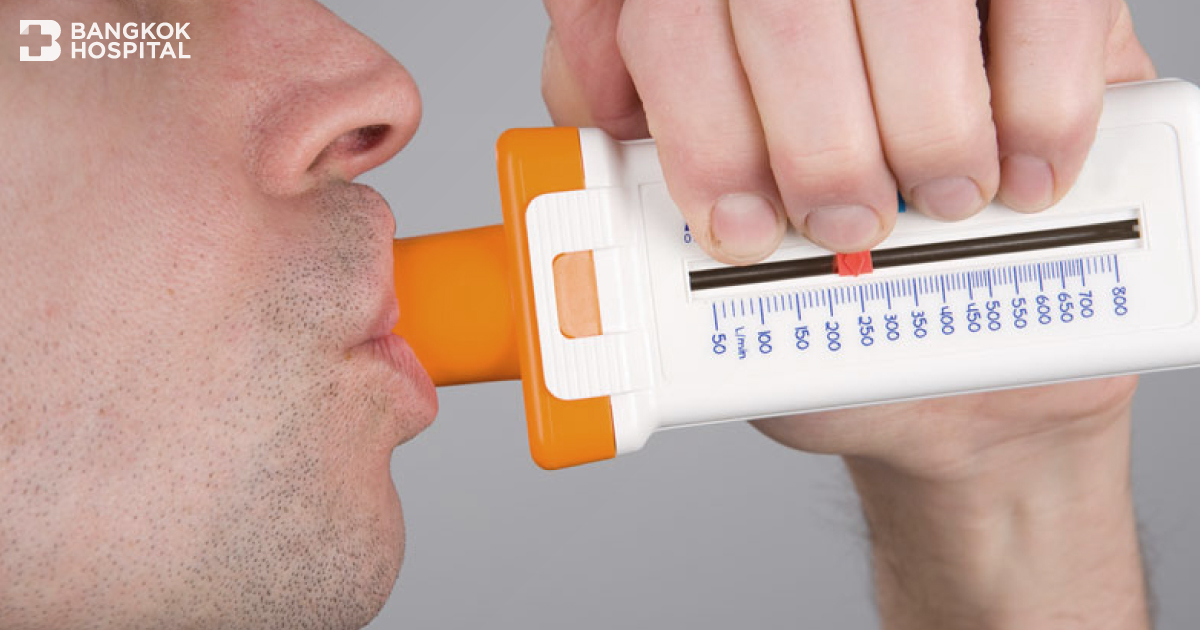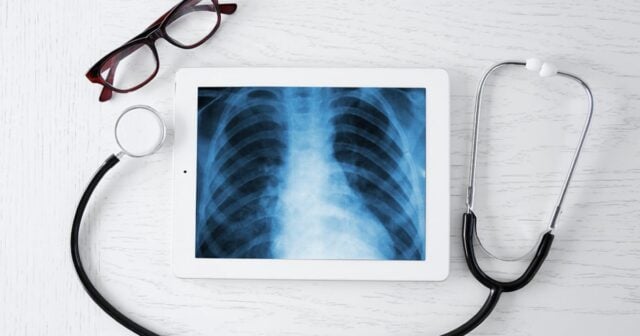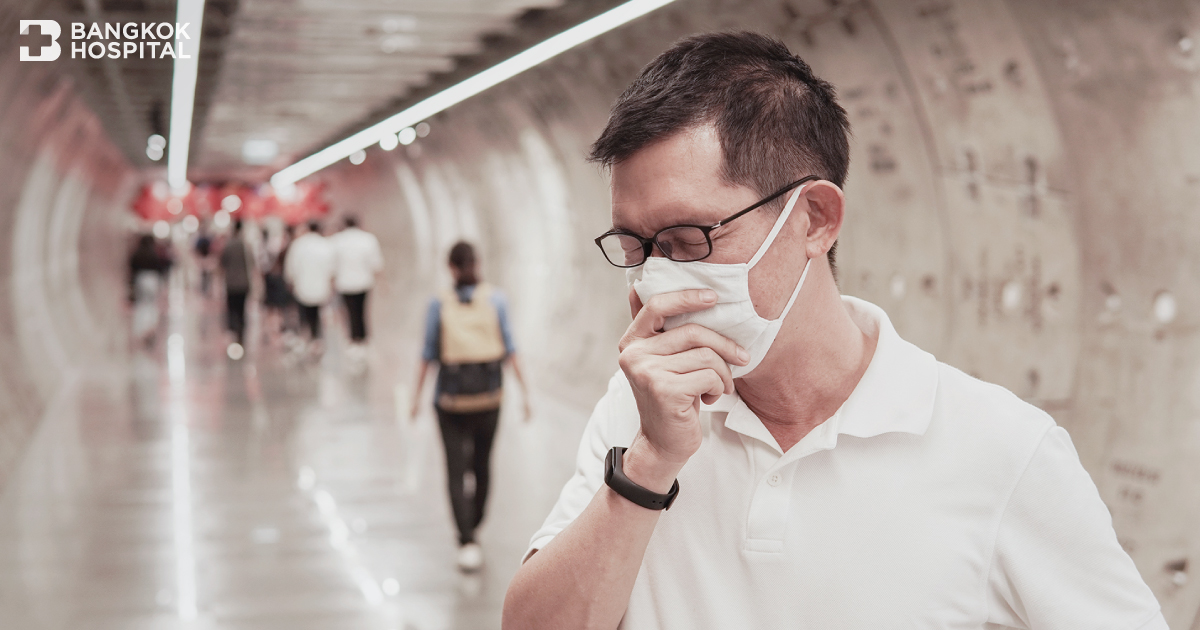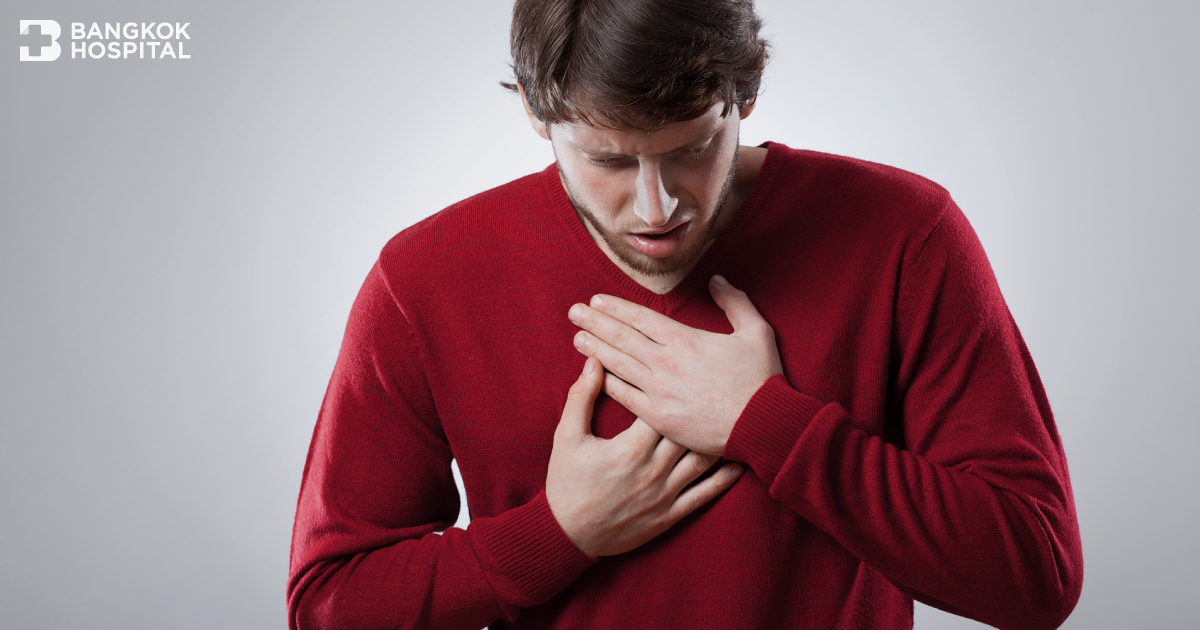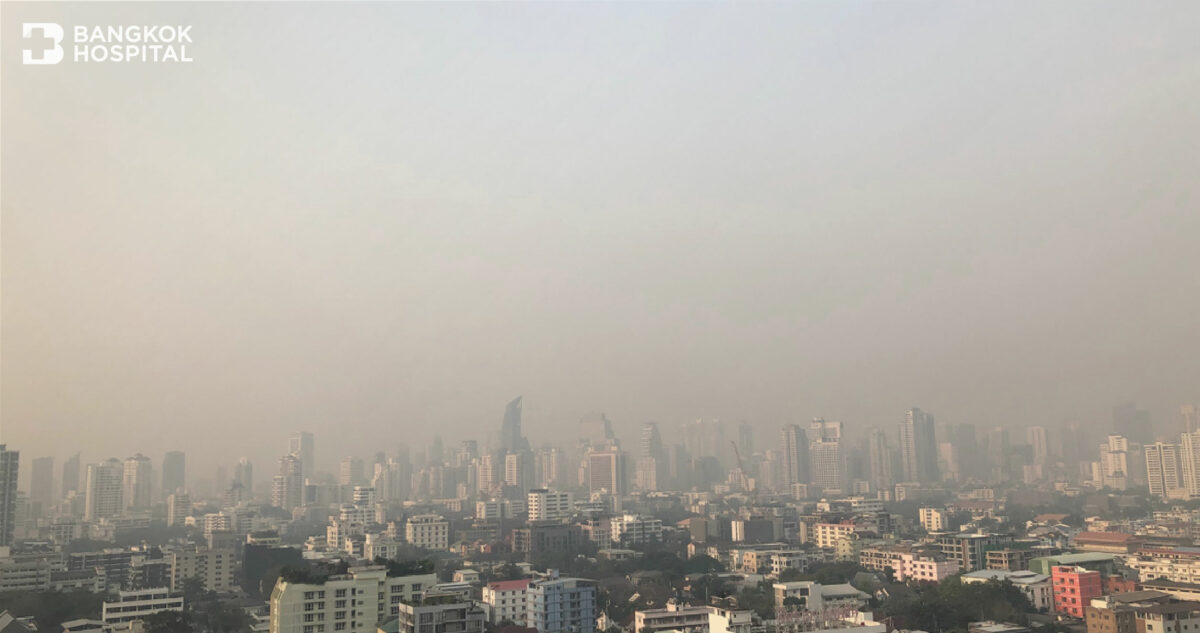Pulmonary function testing is an examination of the physiological properties of the respiratory system, such as breathing rates, lung volume, lung elasticity, gas exchange, strength and endurance of respiratory muscles, and respiratory control. It is used to detect pulmonary abnormalities by measuring the volume of air inhaled and exhaled – using a replacement of air in the machine through a sensor compared to the average values of healthy individuals. The test results can indicate lung function, the severity of any pathology, which results in decreased pulmonary performance, considered alongside medical history, symptoms, physical examination, and exposure to various environments and substances.
The Importance of Pulmonary Function Testing
-
Detecting respiratory system abnormalities in risk groups, such as smokers, those with a family history of lung disease, people with a history and symptoms of lung disease, or abnormalities in lung X-rays, abnormal arterial blood gas analysis.
-
Evaluating the severity of existing lung diseases.
-
Monitoring the progression of the disease.
-
Evaluating the response to medication.
-
Assessing risk before surgery.
-
Evaluating the impact of occupation and environment on lung function.
-
Evaluating lung function and abnormalities
Types of Pulmonary Function Tests
-
Spirometry is a method to measure the volume and flow rate of air entering and leaving the lungs.
-
Measurement of Pre and Post Bronchodilator Spirometry
Spirometry testing before and after administering bronchodilator medication to compare the volume and flow rate of air in and out of the lungs before and after the medication. This can be used for treatment monitoring and diagnosis in certain cases, such as assessing the severity of asthma, aiding in the diagnosis of asthmatic conditions with symptoms but no physical findings.
-
Measurement of Lung Volumes and Capacities
Measuring the volume of air in the lungs or air volume in the lungs related to the different levels of breathing in the lungs, from normal breathing, maximum expiration, and full inspiration. Several diseases and conditions can cause abnormal lung volumes, possibly due to diseases within the lung tissue itself reducing lung elasticity, pleural effusion or cardiac pressure restricting lung expansion, diseases of the chest wall restricting lung expansion, or weakened respiratory muscles unable to produce full inspiratory or expiratory force.
-
Diffusing Capacity Measurement
A value indicating the ability of gases to diffuse through the alveolar and capillary walls into the circulating blood. Factors determining the gas diffusion rate include the gas pressure in the alveoli, the gas exchange area, the thickness of the alveolar and capillary walls, the amount of hemoglobin, and the blood flow to the gas exchange area. This test helps diagnose a group of lung tissue diseases, emphysema, chronic pulmonary artery obstruction, follow-up on lung tissue disease treatment, and assess pulmonary function loss in lung tissue disease monitoring groups. -
Bronchoprovocation or Methacholine Challenge Test (MCT)
A test to assess whether the bronchi are more responsive to stimuli than normal, aiding in diagnosing conditions with abnormal bronchial responsiveness, such as asthma. Particularly useful when symptoms are suggestive of the disease, but physical examination and spirometry do not show abnormalities. -
Airway Resistance Measurement (Airway Resistance, Raw)
This measures the pressure resulting from air flowing in or out of the airways in one breath cycle. Airway resistance changes with various factors, including the size of the airways by diameter and length, the overall area of the airways, characteristics of airflow such as turbulent flow, obstruction in the airway passage, and lung capacity. A fuller or larger lung will have less resistance than a smaller one, useful in diagnosing obstructive airway diseases such as asthma, bronchitis, and chronic obstructive pulmonary disease. -
Maximum Inspiratory and Expiratory Pressures (Pi-Max and Pe-Max)
The maximum force of respiratory muscles that can be exerted in each breath during inhalation or exhalation. -
Maximum Voluntary Ventilation (MVV)
Testing respiratory muscle endurance to assess how continuously the respiratory muscles can inhale and exhale in 12 seconds. The obtained values are linked to the strength and coordination of respiratory muscles and the mechanical properties of the respiratory system overall.

